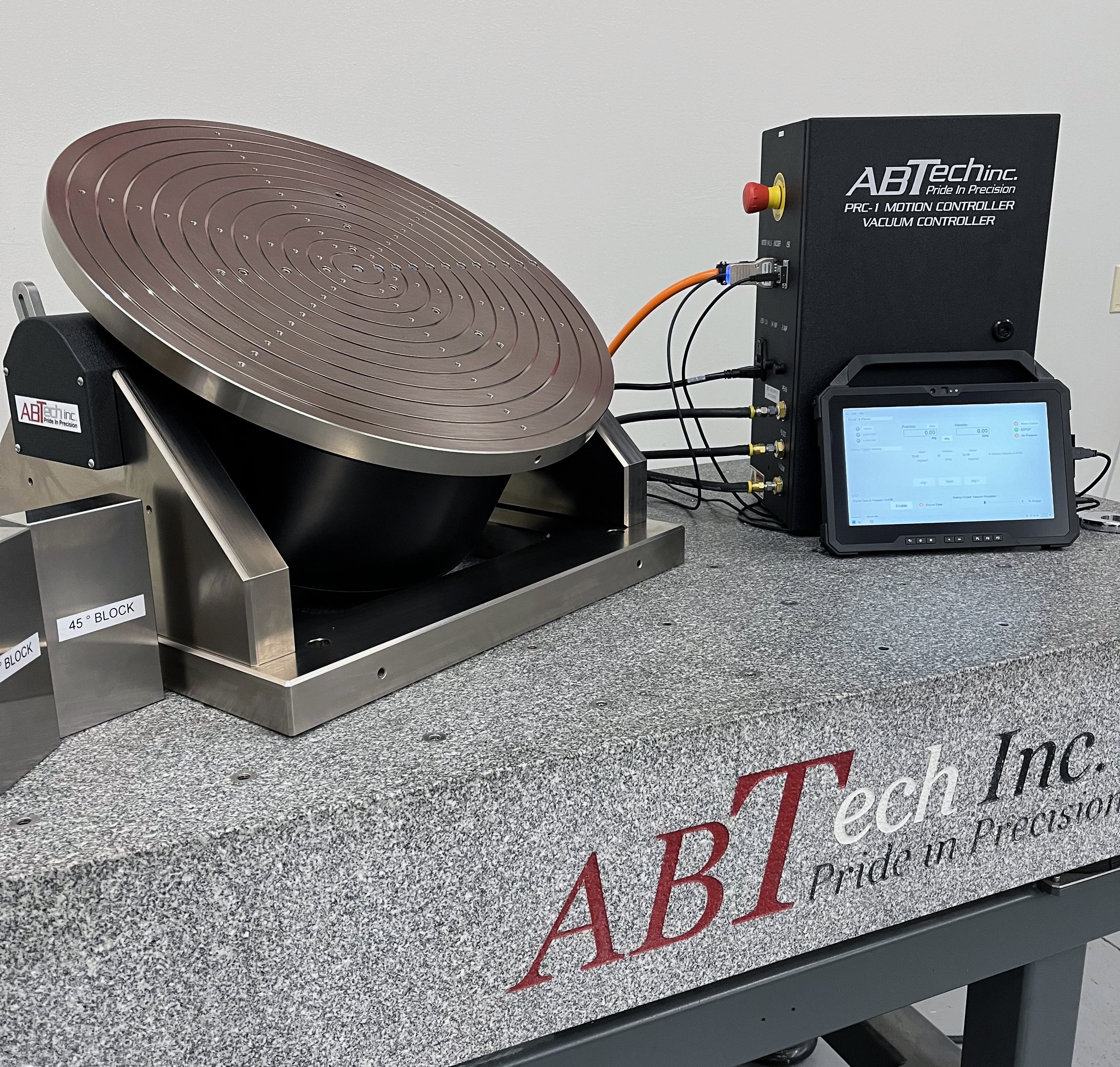
When asked the question, "What are air bearings?" one might think of the future. That's because air bearings, which allow components to glide smoothly over a thin film of pressurized air, are a technology analogous to innovation.
"There are several industries looking to air bearings to push their technology forward. Even though we're at one-or-two millionths spindle accuracies at this point, innovative companies are pushing to get better; we're just constantly improving what we have today," indicates Chris Abbott, COO of ABTech.
Air bearings offer meaningful performance benefits.
- Sub-micron accuracy
- Zero friction and wear
- Exceptional repeatability
- No lubrication required
- Suitability to high speeds
It can be difficult to fully grasp how useful air bearings are to tool builders without first understanding the basics. Read on to learn about air-bearing devices, the science behind them, and to see how air bearings compare to more traditional technologies.
The Basic Science Of How Air Bearings Work
At its core, an air bearing functions on the principle of fluid film lubrication, where two bearing surfaces achieve complete separation. Here's a simplified explanation of the workings:
When pressurized air is forced between the two bearing surfaces, it creates a thin film or 'cushion' of air that separates them. There is no physical contact between the surfaces, so friction is at near-zero levels. The result is exceptionally smooth and precise motion. The key is supplying the correct air pressure and flow to sustain the air film – too low, and surfaces touch.
To understand how air bearings work, it's worth noting the following distinction:
- Aerostatic vs Aerodynamic. Air bearings come in two main classes, aerostatic and aerodynamic. Aerostatics require a feed of pressurized air to separate the bearing faces, whereas aerodynamic bearings generate their own lift from the velocity between moving surfaces.
Of course, the actual engineering of ultra-precise air-bearing devices (such as spindles, linear slides, and rotary tables) is radically more intricate than presented above.
What Are Air Bearings In The Context Of Motion Devices?
Air-bearing motion devices come in all sizes and shapes—their accuracy and infinite repeatability support highly precise metrology and machine tools.
Spindles: Air-bearing spindles deliver the ultimate performance. They're used in single point diamond turning, work holding, grinding, and polishing applications. Major device components include the bearing, motor, encoder, amplifiers, and any fixturing, such as a collet assembly or tool chuck. Parts work together to limit radial and axial error motions.
See our whitepaper, An Optical Machine-Tool Builder's Guide to Customizing High-Speed Spindles
Linear stages: A linear stage (also called a translation stage or linear slide) enables the precise positioning of parts along a single or multi-axis path. The air bearings provide constant, smooth, frictionless motion. Stage components include the base, carriage, rails, linear motors, encoders, drive amplifiers, and more.
Read about ABTech's Ultra-precision Air Bearing Linear Stages
Rotary tables: Rotating air bearing tables often hold parts to a central axis for high-precision manufacturing, such as turbine engine assembly. They're also frequently used in metrology for total indicator reading (TIR), roundness, flatness, squareness, perpendicularity, concentricity, and parallelism measurements.
See our case study, GE Vernova Shares How a Custom-Built, Large-Capacity Runout Inspection Table Helped Speed Up Rotor Repair & Assembly
Air Bearings vs Hydrostatic or Mechanical Bearings
Tool builders want the best components for their machine tools. Air bearings are often the "go-to" choice for high-precision machining as they provide years, even decades, of maintenance-free operation. However, it's important to recognize that while air bearings have their strengths, they're not optimal for all applications.
Both hydrostatic and mechanical bearings have their own set of advantages and potential use cases.
Hydrostatic bearings are contactless and function with oil instead of air between bearing faces, making them up to four times stiffer than air bearings yet still offering outstanding accuracy. They excel in applications where extreme stiffness and high load capacity are essential.
Mechanical bearings (or contact bearings) are ideal for heavy loading or initial processing applications requiring robust parts. They're cost-effective and adequately precise. However, mechanical bearings don't measure up to contactless bearings for pure repeatability or lifespan.
Ask the Bearing Experts
As manufacturing becomes more demanding and machine tool technology advances, the question "what are air bearings?" is being asked more frequently. Understanding the science of air bearings, their role in precision machinery, and how they compare to traditional bearings is critical to creating advanced machine tools.
ABTech is a specialty air bearing manufacturer based out of Fitzwilliam, New Hampshire. For over a quarter century, we've been building custom-made precision motion systems for tool builders, OEMs, manufacturers, and more.
"We like the challenge of solving specific problems for a customer. It's that idea that there's not something out on the market today that fixes the issue. Being that go-to problem solver elevates the group each time a new order comes in," reckons Chris Abbott, COO, ABTech.
To delve deeper into the world of air bearings or to consult a precision motion expert, feel free to get in touch. We're always here to help!
Contact ABTech to learn more.








